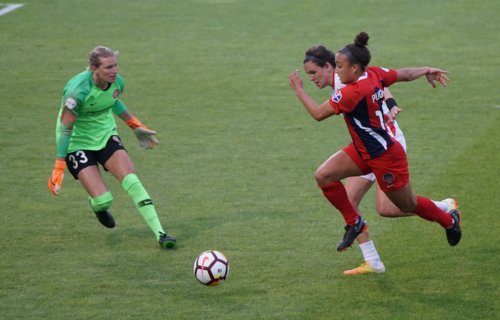NEW YORK — Brain injuries to athletes — including chronic concussions and their long-term impact on cognitive abilities – is a hot topic in professional and college sports these days. It might seem obvious that male athletes, who compete fiercely in a number of brutal contact sports, would also suffer the worst head injuries.
But, in fact, a growing number of studies show substantially higher rates of concussion among female athletes – a finding that still baffles researchers who wonder whether the field of sports medicine has succumbed to age-old gender biases.
The latest study, conducted by a team of research specialists in neurology at Columbia University, compared concussion rates suffered by men and women in the school’s various sports programs between 2000 and 2014. The preliminary study focused on athletes not just in comparable sports, like soccer and basketball, but also in football, where men clearly predominate.
Even so, concussion rates were over 50% higher among women — 23%, compared to just 14% for men.
“It is unclear why women appear to be at higher risk for sports-related concussions than men,” Dr. John Noble, who headed the University research team, said in an American Academy of Neurology release. “The findings from this study highlight the need for more research on the gender differences in concussion.”
In fact, studies of the phenomenon are more than a decade old. In 2003, researchers examined data on concussion gender differences using the National Collegiate Athletic Association’s Injury Surveillance System for the 1997-2000 academic years and found that 9.5% of women compared to 6.2% of men sustained concussions in a variety of sports, including soccer, lacrosse, basketball, softball, baseball, and gymnastics.
A 2007 study using the same database found that female softball players suffered a higher concussion rate than male baseball players, and among all sports, female ice hockey players suffered the highest rates – even higher than male football players.
The bottom line: In every single published study of the issue – a number of them collected by the Women’s Sports Foundation – researchers have found a wide gender gap in sports concussion injuries.
And yet despite the passage of time, researchers seem no closer to explaining the phenomenon, which could be due to anatomical disparities (a woman’s head mass is smaller and neck muscles weaker) or cultural differences (men are more likely to tough it out).
Whatever the precise cause, there is general agreement that the time is long overdue to address the brain injury rate among female athletes by developing gender specific prevention and treatment strategies.
Results of this latest study was presented at the AAN’s 69th Annual Meeting in Boston.

Comments
Comments are closed.